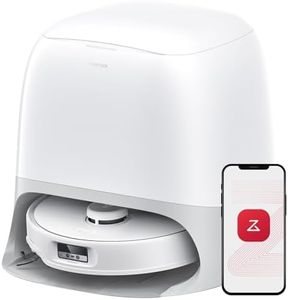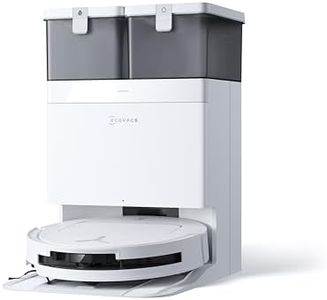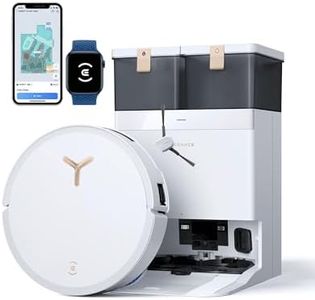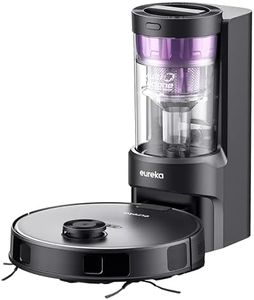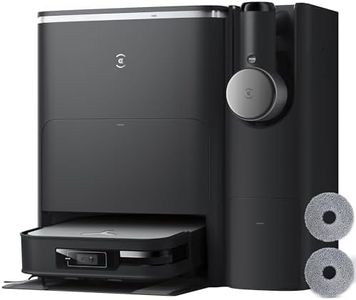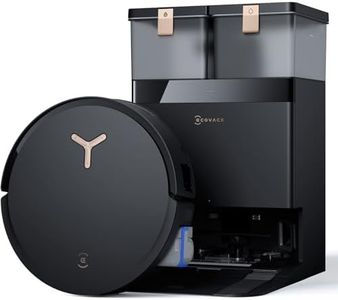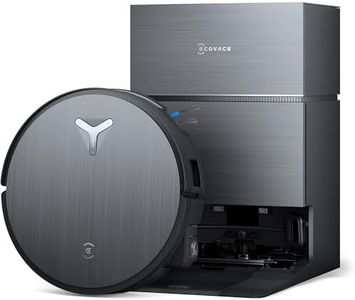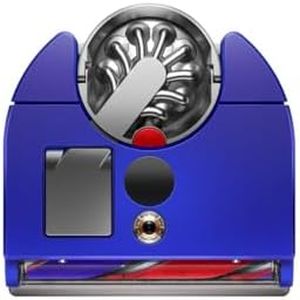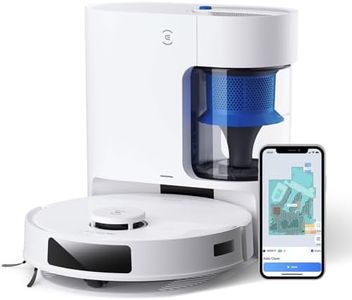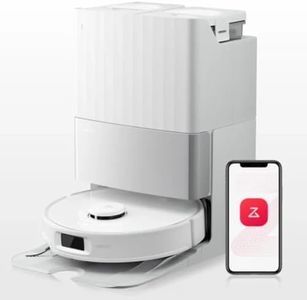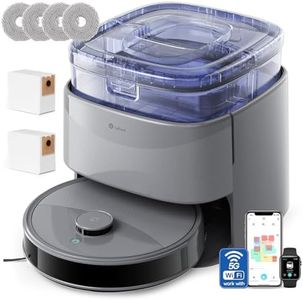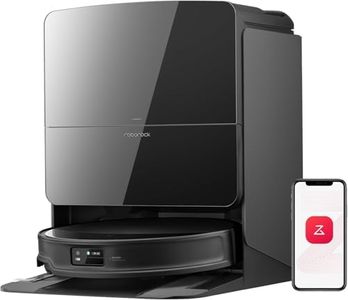We Use CookiesWe use cookies to enhance the security, performance,
functionality and for analytical and promotional activities. By continuing to browse this site you
are agreeing to our privacy policy
10 Best Robotic Vacuums
From leading brands and best sellers available on the web.Buying Guide for the Best Robotic Vacuums
Robotic vacuums are a convenient way to keep your floors clean without much effort. They can autonomously navigate your home, pick up dust and debris, and return to their charging stations when done. Since there are many types of robotic vacuums with different features, it's important to think about what you need in terms of cleaning power, navigation, and ease of use. Understanding the key specifications will help you choose a model that fits your lifestyle and the layout of your home.Battery LifeBattery life refers to how long the vacuum can operate on a single charge. This is important because it determines how much cleaning the vacuum can do before returning to its charging station. Vacuums with shorter battery life (typically around 60-90 minutes) are usually suited for small apartments or single rooms, while those with longer battery life (over 100 minutes) are better for larger homes. If you have a big home, look for a vacuum with extended battery life or one that can automatically recharge and resume cleaning. For smaller spaces, shorter battery life should be sufficient.
Suction PowerSuction power measures how strong the vacuum is at picking up dirt and debris. Higher suction power is better for deep cleaning carpets and dealing with pet hair, while lower suction power might suffice for homes with mostly hard floors and light dust. Suction power is usually indicated in Pascals (Pa) or sometimes by manufacturer’s own ratings; entry-level values might start around 1000 Pa, while stronger vacuums offer 2000 Pa and above. If your home has pets, thick carpets, or you want a deeper clean, choose a vacuum with higher suction. For light cleaning or bare floors, medium suction is usually enough.
Navigation and MappingNavigation and mapping technology help the robot move efficiently and avoid obstacles. Basic vacuums use random cleaning patterns and may miss spots or take longer, while advanced models use sensors, cameras, or laser mapping for thorough and organized coverage. If you live in a home with lots of furniture or complex layouts, consider a vacuum with sophisticated navigation so it can clean systematically and avoid getting stuck. If your space is simple and open, basic navigation may be sufficient.
Dustbin CapacityThe dustbin capacity tells you how much dirt the vacuum can hold before needing to be emptied. Smaller bins (less than 0.4 liters) need to be emptied more frequently, which can be inconvenient in larger homes. Larger dustbins (over 0.5 liters) are ideal for big households or for those who want to empty it less often. If you have pets that shed or children who create more mess, opt for a bigger dustbin. For smaller households or homes that don’t get very dirty, even a small capacity can be enough.
Wi-Fi and Smart FeaturesWi-Fi and smart features let you control your robot vacuum from an app or with voice commands. Some vacuums can be scheduled, monitored, or customized via your phone. Advanced models also offer room-specific cleaning or virtual boundaries. If you enjoy technology and want more control, look for models with robust smart features. If you prefer a simple clean-and-go operation, these features may not be necessary.
Height and DesignThe height and design of a robotic vacuum affect where it can clean. Thinner robots can get under low furniture, while taller models might struggle in tight spaces. If you have a lot of furniture with low clearance, choose a slimmer design. Also, check the overall shape—round models are common, but some designs with flat fronts can better clean corners and edges.
Noise LevelNoise level is measured in decibels (dB) and affects how noticeable the vacuum is while running. Some people don’t mind a noisier vacuum, especially if it cleans while they're out, but quieter models (under 60 dB) are better if you’re often home or have pets/children sensitive to noise. Consider when and where you’ll use the vacuum to decide what noise level you can tolerate.
